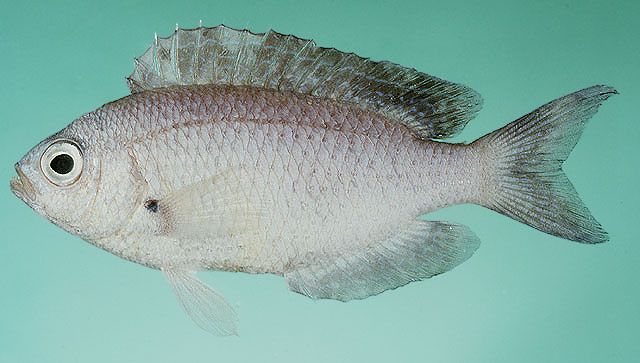| Pomacentridae (Damselfishes), subfamily: Pomacentrinae |
| 14 cm TL (male/unsexed) |
|
reef-associated; marine; depth range 2 - 80 m, non-migratory |
| Indo-West Pacific: Red Sea and Persian Gulf to the Ryukyu Islands, Taiwan, Indonesia, New Guinea, and northern Australia. |
|
Dorsal spines (total): 13-13; Dorsal soft rays (total): 12-13; Anal spines: 2-2; Anal soft rays: 12-14. Description: Overall greenish grey to light blue, ventral whitish, dorsal sometimes with yellow tinge. Body depth 2.5-2.8 in SL (Ref. 90102). |
| Usually identified as P. jerdoni (Day, 1873), a junior synonym (Ref. 48636). Adults are found mainly along continental margins rather than truly oceanic areas. Inhabits flat sandy or rubble bottoms around patch reefs of lagoons and trawling grounds (Ref. 7247). Adults often seen in small groups out in the open on sandy substrate, swimming well-above the bottom and unlike other damselfishes rely on speed to get away from predators rather than diving into the shelter or reefs or burrow. Juveniles often shallow estuaries, but adults mainly in deeper water offshore at depths of 20+ m and have been reported to 80 m depth (Ref. 48636). Oviparous, distinct pairing during breeding (Ref. 205). Eggs are demersal and adhere to the substrate (Ref. 205). Males guard and aerate the eggs (Ref. 205). Diurnal species (Ref. 54980; 113699). |
|
Least Concern (LC); Date assessed: 18 August 2023 Ref. (130435)
|
| harmless |
Source and more info: www.fishbase.org. For personal, classroom, and other internal use only. Not for publication.
